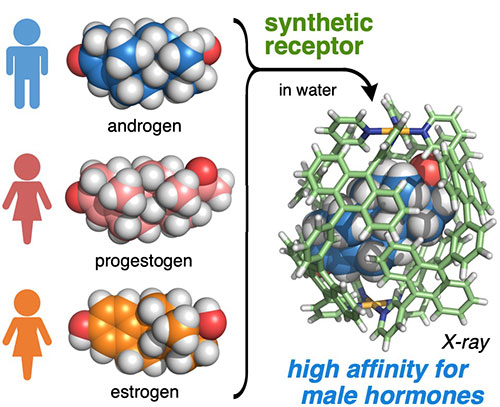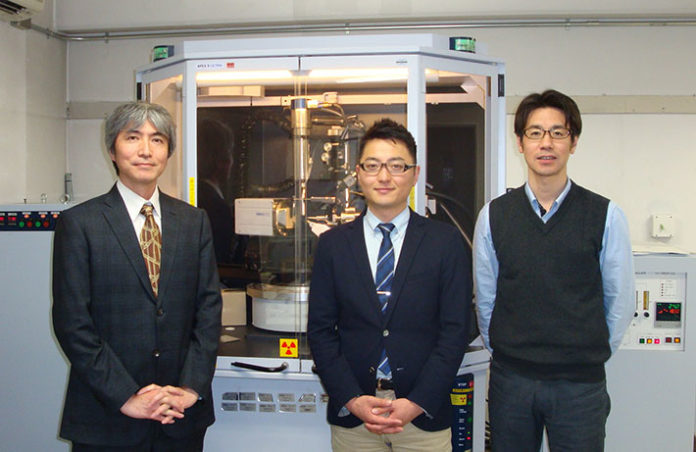Biological receptors distinguish and bind steroid sex hormones, e.g., androgen-, progestogen-, and estrogen-type hormones, with high selectivity. To date, artificial molecular receptors have been unable to discriminate between these classes of biosubstrates.
In a new study, scientists at Tokyo Tech have developed an artificial polyaromatic receptor that preferentially binds male steroid hormones from a mixture of male and female hormones in the water.
This capsule shaped synthetic receptor can differentiate between male and female steroid hormones and also shows unique high binding affinity toward androgenic male hormones in the water. The unique design of the cavity within the receptor is the key to this breakthrough. The cavity, surrounded by polyaromatic frameworks held together with metal ions allows the receptor to act as a semi-rigid container. The container is flexible enough to complement the shape of the hormone and to induce effective bonding interactions.
Their experiments showed that the synthetic receptor preferentially binds steroid sex hormones in an order similar to natural androgen receptors, beginning with male hormones such as testosterone and androsterone, followed by female hormones such as progesterone and beta-estradiol.

A schematic representation of the selective binding of testosterone from a mixture of testosterone, progesterone, and beta-estradiol in water. The receptor has an inner cavity with a diameter of approximately one nanometer.
When placed in a mixture of male and female hormones suspended in an aqueous solution at 60 degrees Celsius for ten minutes, the receptor exclusively bound testosterone with more than 98% selectivity. This high level of selectivity was achieved even when the mixture contained a large excess of female hormones.
Scientists then used X-ray crystallographic technique to better observe the spherical cavity and found that it is distorted into an elliptical shape upon encapsulation of testosterone. This conformational change contributes to the enhancement of intermolecular interactions between the receptor and the hormone.
Taking a step forward, scientists came up with a new way of using receptor to detect extremely small amounts of a male hormone. They prepared a receptor-dye complex that emits bluish green fluorescence without testosterone. By adding a nanogram amount of testosterone, the fluorescence decreased considerably upon the encapsulation, representing a remarkable new ultrasensitive detection method.
Scientists noted, “We envision that our synthetic receptor will be used for the development of practical, ultrasensitive analytical devices for steroid sex hormones, ranging from medical tools to doping controls in sports, in the near future.”
The study, conducted by Michito Yoshizawa, Masahiro Yamashina and co-workers, is a continuation of the team’s previous work on developing innovative nanocapsules for a wide range of biosensing applications in the medical and environmental fields. The study is published in the journal of Science Advances.
